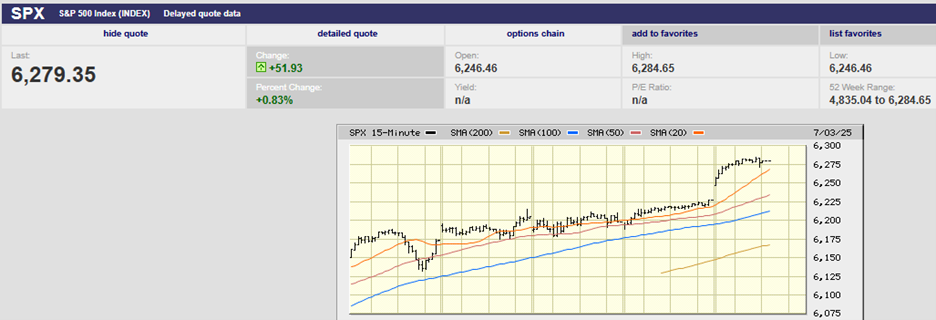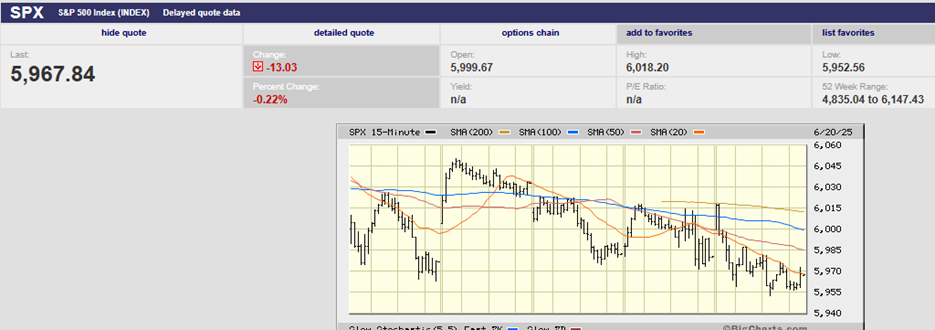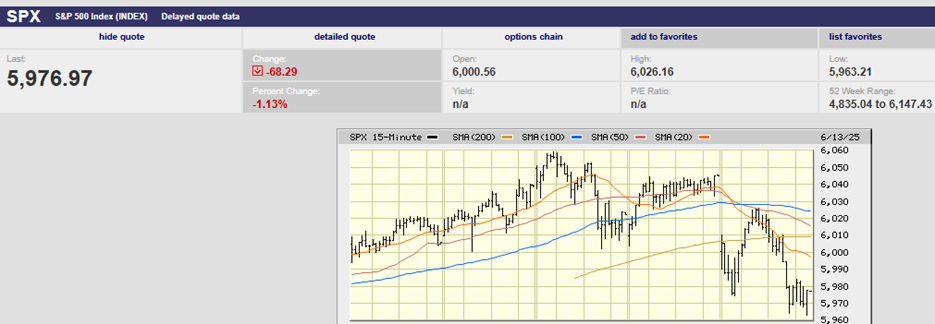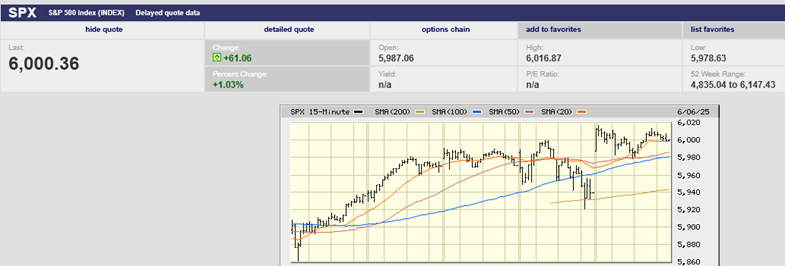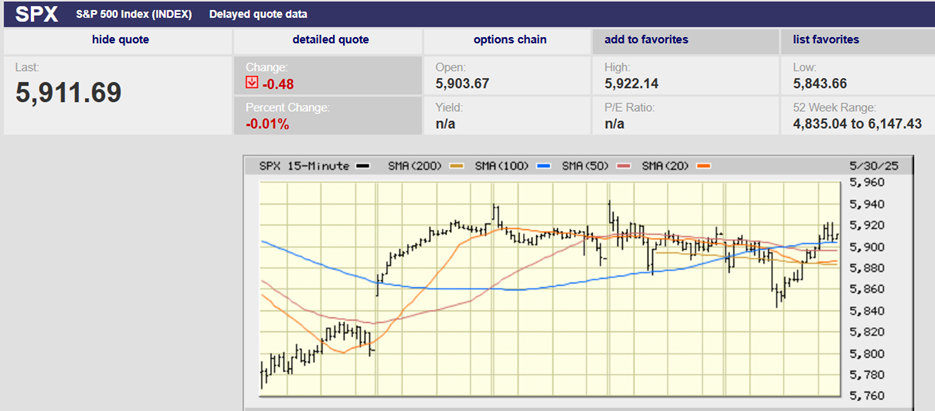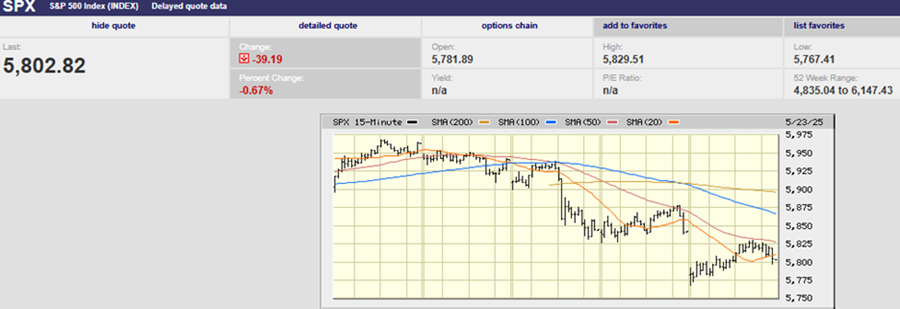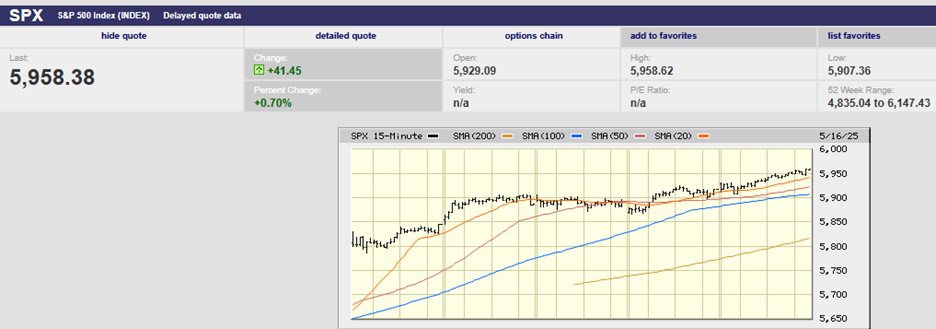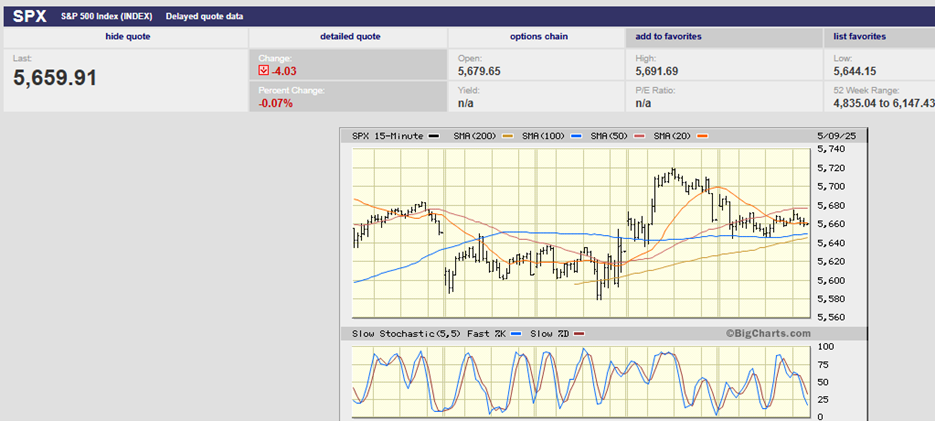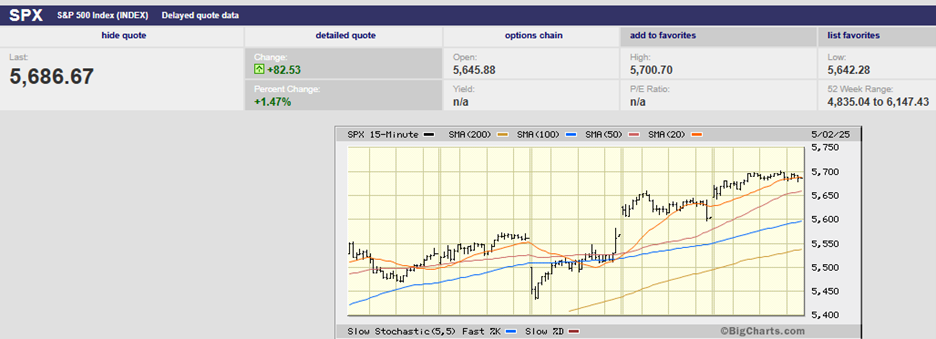
CHINA TRADE TALKS? IT’S A FACTOR BUT NOT AN EXPLANATION.
FROM THE BLEACHERS, VOL. 19
MARKET UPDATE
The S&P 500 lost 2.2% last week to 2881.4; it would have been worse except for sharp afternoon rallies following morning selloffs both Thursday and Friday. Traders are working overtime to keep the index above its 50-day moving average. They know that a close below the 50-day opens the trap door and greatly increases the likelihood of a substantial correction. Looking at the intra-day action over the last seven trading days is instructive. The S&P 500 fell below its 20-day moving average on Thursday 2 May before bouncing off 2900 and closing above the 20-day. It managed to hold above on Friday 3 May. Monday 6 May saw the S&P 500 open below the 20-day only to bounce off 2900 again and again recover above the 20-day by the close. The index opened just below the 20-day moving average on Tuesday and traded all the way down to almost the 50-day before recovering about one third of the day’s losses. The S&P 500 did finally close below the 20-day, however.
Traders were now free to test the downside, given the close below the 20-day on Tuesday, but first they chose to attempt to retake the 20-day on Wednesday. A close back above would negate the close below and perhaps convince investors to try for a new market high in the weeks to come. Alas, the attempted rally failed at …2900! The market was unable to move back above former support, which signaled to everyone it was time to reduce market exposure and perhaps even position themselves to profit from a downward move. Wednesday’s trading produced an inverted cross – a bearish signal, with the S&P 500 closing at 2879.4, about where it opened. Why is an inverted cross a bearish signal? Because it’s formed by a market that rallies early in the day, but then sells off late in the day. In other words, buying was overpowered by selling.
Everyone who trades was ready to trade the downside on Thursday as a result of Tuesday’s close below the 20-day and Wednesday’s failed rally attempt. The market gapped down at Thursday’s open, all the way to the 50-day moving average at around 2860. The S&P sold off to 2836 before a furious counter-rally pushed it back above the 50-day moving average by the close, leaving the index at 2870. Friday’s action saw more selling, as the market again gapped down at the open to the 50-day moving average, again breached the 50-day, and again rallied back above the 50-day by the close. However, Friday’s low of 2825 broke the 2836 low set on Thursday and traders are likely to test it before any move higher. A close below the 50-day moving average and a failed test of the 2825 low makes it far more likely that we’ll see a 10% or greater correction shortly, before any sustained rally to new highs occurs. A successful retest of 2825 would increase the chances of another run at new record highs.
Oh, by-the-way, the pundit’s explanation for the S&P 500’s ups and downs over the last week was (more or less) entirely focused on the China trade talks. Certainly, a factor impacting economic growth and earnings, but not something that explains the intra-day market movements of the last seven trading days.
(I see this morning that the S&P 500 futures are showing a large down open. The futures are down 1.86%, or about 53 points now. It appears we may have a retest of the 2825 low today and perhaps a close below the 50-day moving average as well, which could trigger trading algorithms, leading to further downside this week. Of course, large down openings are often bought as traders cover short positions and take profits. It promises to be an interesting day! As for the longer term, we still think the jury is out on whether the furious rally off the December lows is sustainable or merely a bounce in an ongoing bear market that began last September.)
INVESTING – WHAT BONDS ARE GOOD FOR
Bonds are excellent at matching cash flows to liabilities. Bonds have a known payment schedule, allowing portfolio managers to create a schedule of cash flows to cover known spending needs. Bonds work well for retirees as well for the same reason. Normally longer-term bonds pay higher interest rates, compensating investors for the greater uncertainty of the real value of those cash flows in later years, just not now.
The 3-month Treasury closed Friday yielding 2.442% with the 5-year at 2.278% and the 10-year at 2.466%. The yield curve is inverted out to five years and essentially flat out to ten years. The longer dated bonds are much more sensitive to changes in interest rates and will lose value more quickly if rates do start to move higher, something no one seems to be expecting anytime soon. The crowd appears to believe inflation is dead and buried. We aren’t nearly as sanguine. Furthermore, bonds don’t offer the same protection in a stock/bond portfolio with yields so low. Low yields mean less cash flow to offset losses in stocks. Nor are corporate and high-yield bonds zigging when stocks zag. Richard Bernstein Advisors looked at the last five years of data and found that corporate bonds have been positively correlated with stocks. Bernstein Advisors did find a negative correlation between stocks and Treasury bonds over the last five years, however. Investors who are looking for diversification for their stock portfolios should focus on short-term Treasury bonds; boring perhaps, but prudent given the high likelihood of more volatility in stocks markets in 2019.
Regards,
Christopher R Norwood, CFA
Chief Market Strategist
